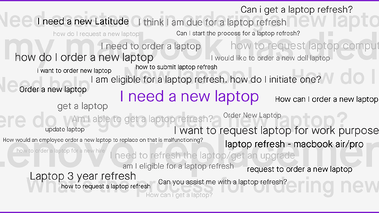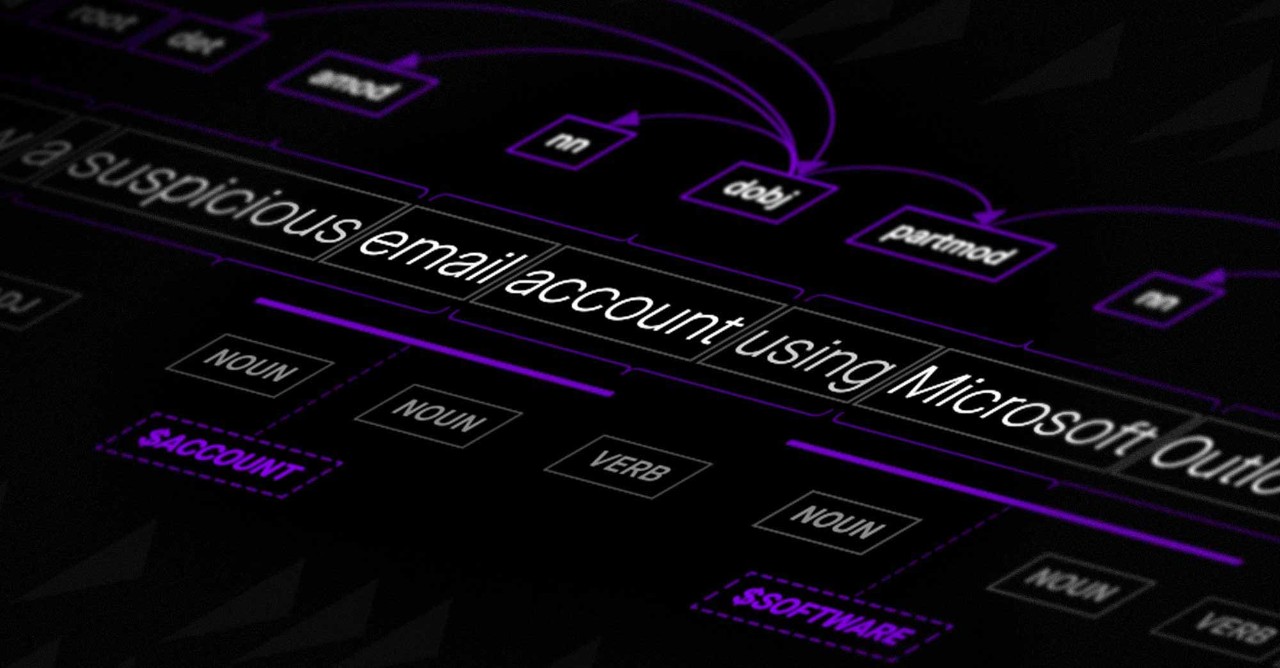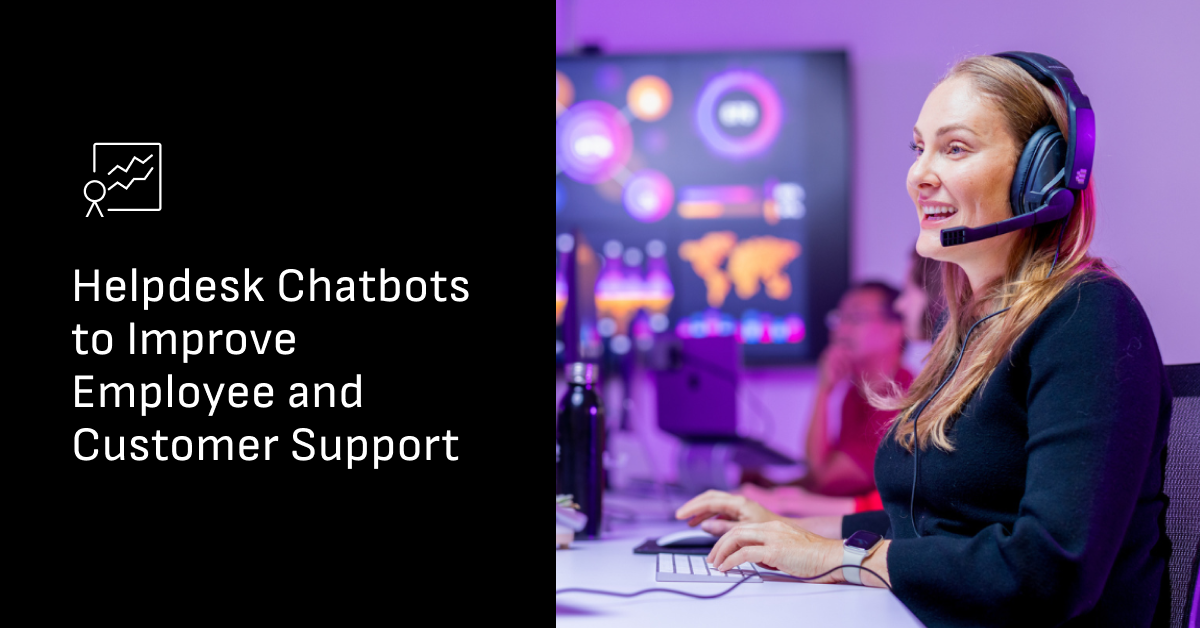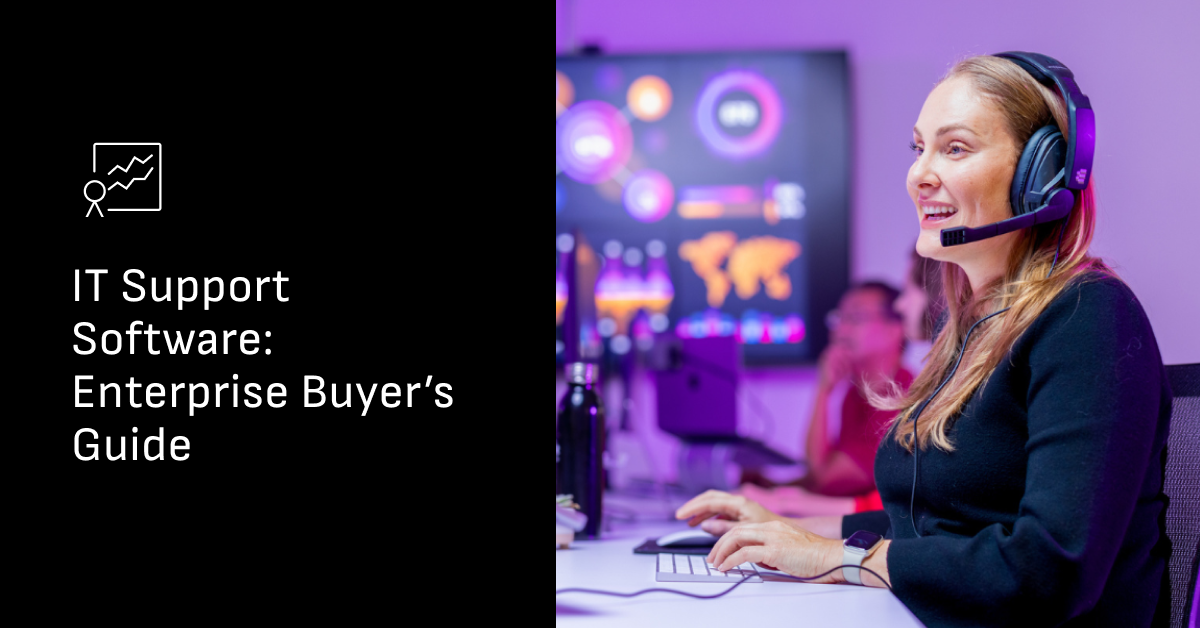The genius of a great IT service desk team lies in the agents' ability to listen to employees, understand their issues, determine the underlying causes — and then proceed to resolve them as quickly as possible. After all, employees aren’t expected to be IT experts. They’re expected to focus on their increasingly demanding work, and when an IT issue gets in the way, they contact an IT agent to report the symptoms they’re seeing. A great agent listens, understands what the employee is reporting, and resolves the issue or guides them towards rapid resolution.
The challenge of scale
Scaling a great agent is a herculean task. With a limited number of agents, the unavoidable reality is that bottlenecks arise — agents have limited bandwidth to understand and know everything — especially given that enterprises today run hundreds of cloud applications and distributed systems across a range of commoditized hardware and operating systems.
In order to scale IT service while controlling costs and improving reliability, enterprises have implemented processes that help prioritize issues and route them to the most suitable agent or group. IT uses a set of service level agreements (SLAs), as well as metrics like First Contact Resolution (FCR), First Time Right (FTR), and Mean Time to Resolution (MTTR), to ensure that the quality and speed of service doesn’t degrade beyond acceptable levels.
Large IT service desks have become more coordinated thanks to the IT processes and underlying workflow systems they’ve implemented, but the results for employees haven’t been as good. For employees, these systems often fail to provide fast, high-quality IT service. IT ticketing systems are good at helping agents move tickets into queues where service desk agents serve as nodes, but ticketing systems don’t actually resolve issues themselves. As a consequence, great employee experience, characterized by instant resolution of employees’ issues, has remained elusive.
Providing rapid service at scale
Over the past decades, there have been many attempts to find technology solutions to this problem of slow employee support. Unfortunately, many technologies deployed to help employees find answers or resolve issues have failed to live up to the promise.
IT portals and workplace automations remain elusive destinations for employees, ones they often can’t remember or access easily — and when they do, they have a hard time navigating them. They are confronted with a slew of buttons and widgets — few of which make much sense to the employee. For example, if you need access to a folder for your project, would that be a service, or a request, or an incident? Turns out, it’s buried under “Request → Active Directory → Modify AD group permissions,” which only a small number of employees are likely to know.
When it comes to searching for answers, search in enterprise knowledge systems is underwhelming. IT teams often resort to hiring people to augment knowledge articles with keywords to help surface relevant results for employees. In practice, these techniques don’t work because employees describe their issues with symptoms. Instead of saying “what’s the process for getting a loaner laptop,” they will say “I accidentally spilled orange juice on my keyboard.”
The goal of the IT portal was to give employees a platform where they could find an answer to their question or fulfill a request — without any intervention from an IT service desk agent. But even if employees discover and navigate to the portal, if they only understand the symptoms of their issue — and not the resolution — they’ll most likely resort to creating a ticket or calling the service desk so they can get help figuring out the right next steps.
You can see this failure when you look at portal adoption and ticket-filing statistics. It’s rare to see enterprises where more than 20% of tickets originate in a self-service portal. Adoption just hasn’t proved to be strong enough. What’s interesting is that even for tickets filed through a self-service form, the majority of these are “Generic Request” forms that have no specific data collection or automation tied to them. They are just another type of free-form ticket that agents will have to triage by hand. The bottom line is that agents are still in the critical path.
Relieve the burden, don’t shift it
Portals were an effort to quickly scale IT services while improving speed of service, but the net effect only moved the burden of understanding issues from agents to employees; it didn’t materially impact resolution times.
If we want to accelerate service, the first step is to understand each issue immediately when it's reported — delays in resolution are usually the result of tickets waiting in queues for agents to interpret them. Doing this requires a system that provides natural language understanding (NLU). Ideally, NLU takes the form of a chatbot embedded in an enterprise-wide chat platform (like Microsoft Teams, Slack, Google Hangouts Chat, and others), one that employees already use regularly to chat with other employees — which makes discoverability and access super easy. These two abilities — understanding IT issues as reported by employees, and having follow-on conversations with employees — are at the core of the Moveworks platform.
NLU goes deeper than the natural language processing approaches that have long been used to identify types of words and sentences. NLU techniques get to the heart of what the employee is saying when they chat with the service desk bot or file a ticket with IT. In order to do this, these techniques consider the employees’ organizational context and combine it with domain understanding to successfully interpret IT issues at extremely high levels of precision and coverage.
Support across multiple channels
The harsh reality of rolling out a new IT service chatbot is that changing employee behavior is hard. Even if you deploy the world's best chatbot, many employees won't know the chatbot is available to serve them, and they certainly won’t change their habits right away. There are many channels where employees go to ask for help: they file IT tickets, they post to a group channel in Slack or Teams, or they email the support desk. With all these ways to get help, it's absolutely critical that an AI resolution platform be able interpret requests that comes in through any channel.
Once a platform interprets the issue, it might need more information from an employee to further diagnose the issue or resolve it upon confirmation from the employee. To provide instant service, the conversational AI system should be able to find employees where they are (for example, in their enterprise chat) and engage them to resolve their issue fully. Through conversation, the system can seek confirmation, clarify the request, ask follow-on questions, and even request approvals.
Employees set a high bar for conversation quality
A conversational chatbot can only help the organization scale if employees embrace it, and this can only happen if the chatbot provides a natural flow of conversation leading to quick resolution. The unfortunate state of many chatbots today is that when employees interact with them, the experience is poor. The employee gets the feeling the conversation is going nowhere, and they give up trying to chat with the bot. Good conversation is fluid, doesn't get stuck in loops, and gives the conversation partners the feeling they're being understood. If the chatbot responds confusingly when it can’t understand a request, or if the system gives a response that’s clearly wrong, the employee will lose trust in the system and may revert to their old practice of picking up the phone to call an agent or filing tickets.
On the other hand, if the chatbot provides consistently useful results, employees will quickly adopt it as their go-to resource for solving problems. Our experience at Moveworks shows that once employees gain confidence in the bot, they also begin to chat with it for smaller issues they might have otherwise left unaddressed, like overdue software upgrades and license renewals. The round-the-clock, easy availability of a chatbot encourages this adoption pattern—often eliminating employee pain that enterprises didn’t even know existed.
Finding the best resolution path
A great IT agent does more than understand and clarify issues with employees, and an AI resolution system should do the same. Employees can have hundreds of ways of describing a particular issue, so NLU services must able to decipher or clarify ambiguous words and identify the most desirable resolution path for the issue. For example, a request of, “I am unable to access the data for sales pipeline in the northeast” might map to the “Requests → Enterprise Platforms → Tableau → Change user permissions” form in the IT self-service portal. Ensuring that employees know this and make the leap from knowing their request to the form is nearly impossible. An AI system that resolves employee requests must have an underlying architecture that returns the best path towards resolving employee issues, and it must be able to do this across a diverse set of possible paths—from answers to forms to modifying a system of record like Active Directory or triggering an existing automation.

To provide consistently good help, an NLU system must learn from both the language employees use to describe their issues and from the range of resolution paths that are available to it. In other words, even a precise understanding of the issue description doesn’t help if the system can’t return the best answer or resolution for the issue.
IT support needs to be easily accessible
Employees run into IT issues regularly, but generally they don’t encounter the same issue over and over again. In other words, when an employee has a problem, it’s usually a problem that’s new to them. This means they probably don’t know where to go or what to do in order to resolve it. It’s unrealistic to expect that employees have expert-level knowledge in the IT systems they need help with, or remember how to access elusive destinations like the IT portal page. The right approach is to build systems that understand their pain as they express it in symptomatic language.
The reality of employees’ pain is best represented by the following characteristics:
- They need help infrequently: typically 1-2 times a month. As a result, they rightly don’t want to spend time learning how to access and navigate portals.
- They’re unable to connect their symptoms to an available resolution path. The path to resolution is wide and varied, and it's unrealistic to expect the employee to know these paths. The possible paths to resolution can range from following instructions in a knowledge article, to changing permissions in a security group, to installing desktop applications.
- Even if they get past the first two hurdles, they’re not authorized to modify underlying systems and have to wait for IT service desk teams to provide the last mile of service.
To relieve employee pain, a good AI resolution platform will understand symptomatic language, choose the right resolution path, and resolve the issue immediately or show the employee how to resolve it. If a manager or system owner needs to approve the resolution (for example, when the employee is asking for a new software license), the AI resolution platform should have the ability to reach out to approvers over chat and get an immediate decision, while keeping the employee apprised of the task’s status.
The future of IT support is conversational
Conversational user interfaces are the way employees will interact with IT and other corporate services. Here’s why:
- Employees get the simplicity they want. Navigation is easier because the chat interface eliminates complexity. Employees just describe their problems in a few words or sentences; no more hunting for forms and clicking buttons.
- Discovery becomes effortless. If the employee doesn’t know where to go to resolve their issues, the chatbot reaches out to them to help them out. To do this, a good resolution system scans incoming support tickets and uses its NLU to understand them. For each ticket that has an automated resolution path available, the system contacts the employee over enterprise messaging and offers them an immediate resolution, all without involving a service desk agent.
- The IT interface for employees becomes future-proof. Over time, more features in an IT service portal mean more tabs and fields, resulting in an unusable portal. With a conversational interface, even as you add features, it remains easy to use. All an employee has to do is punch out a few words to describe their issue.
Stay tuned
Stay tuned for our next post in which we’ll dive into why NLU is a hard problem and how a well-engineered NLU system can handle it in the context of IT service delivery.
To learn more about how our customers are using Moveworks, take a look at our case studies:
Table of contents



